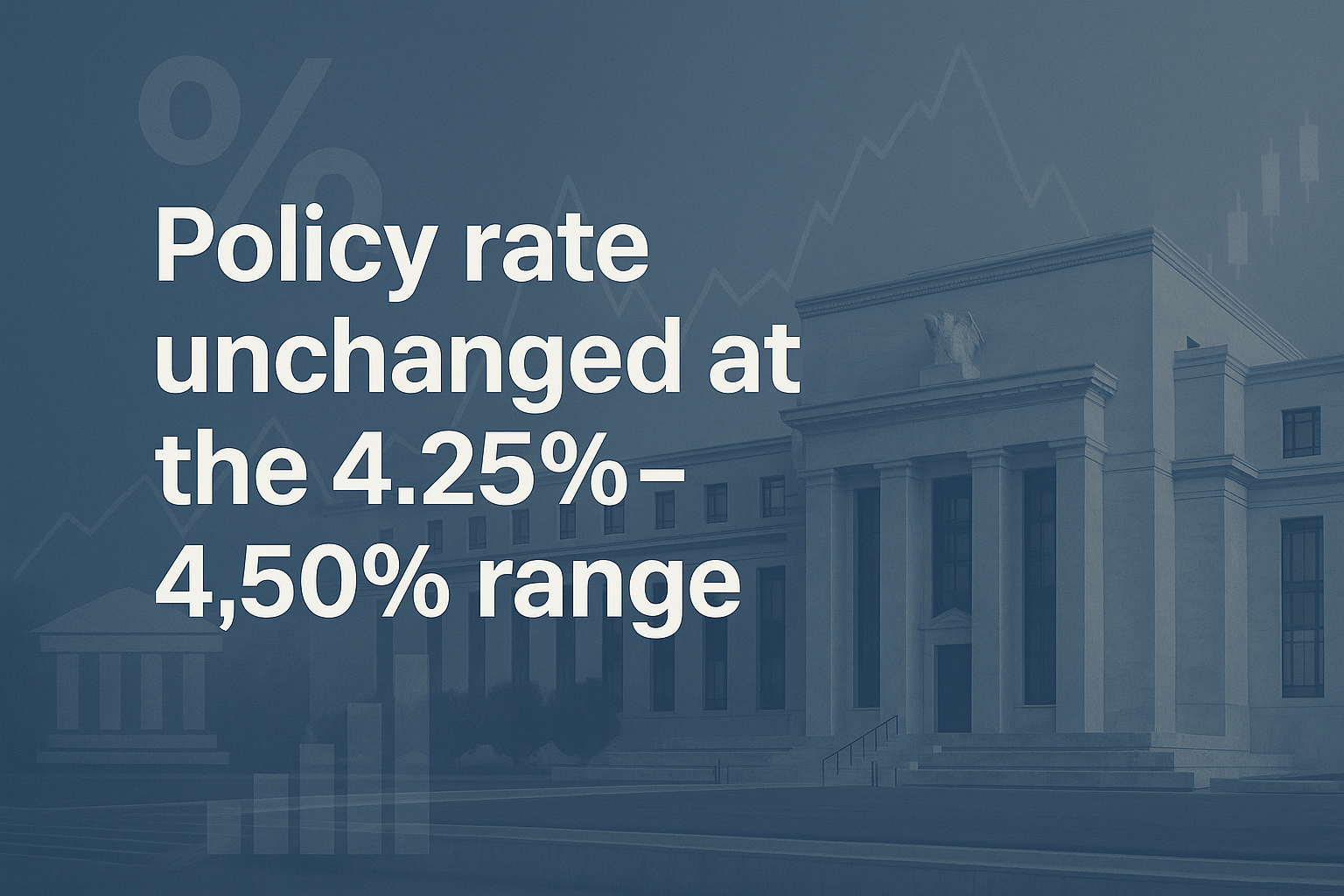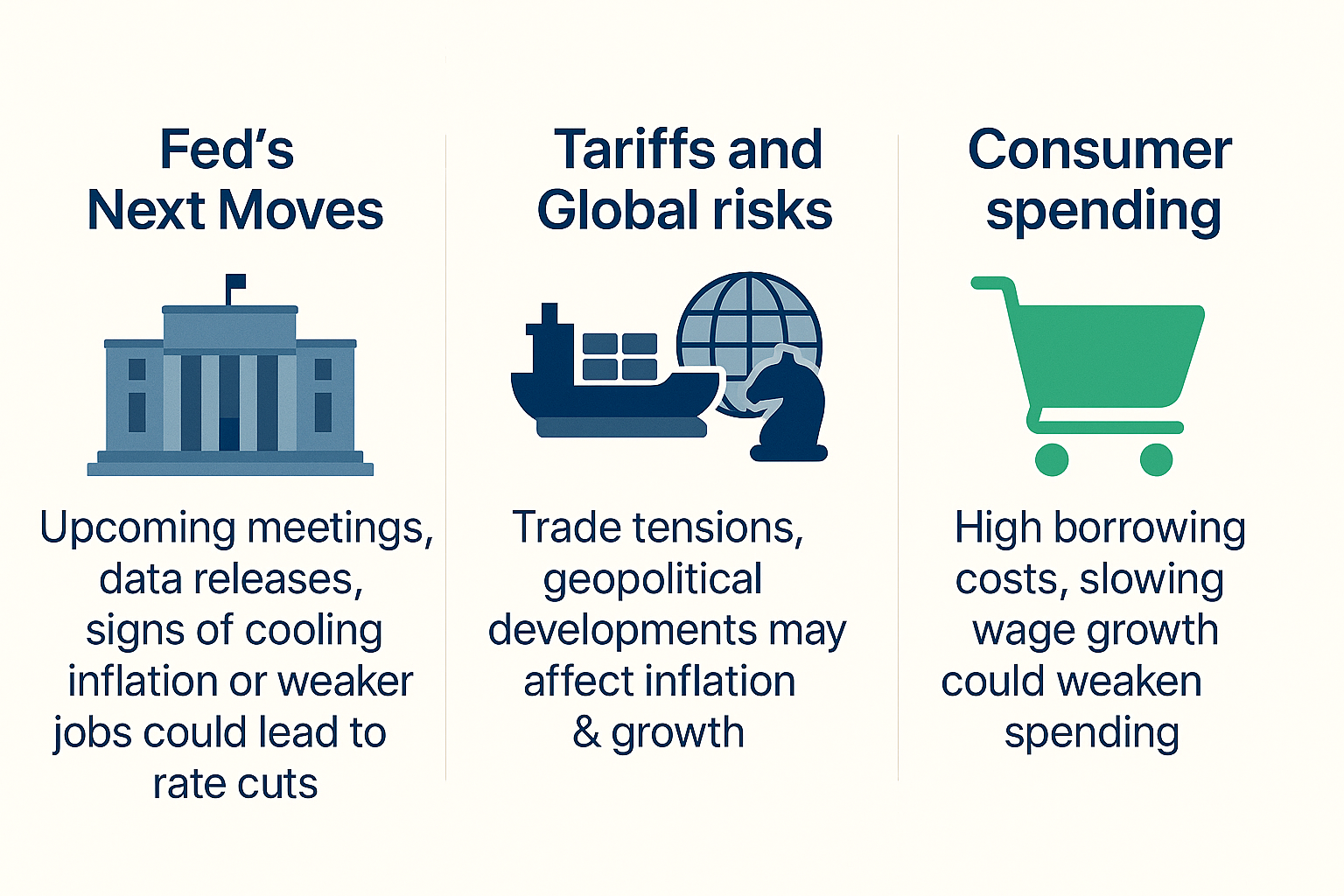This decision comes at a time of heightened economic uncertainty, persistent inflation, and a shifting global landscape. Here's what the Fed's move means for markets, consumers, and the broader economy.
Fed Interest Rate Decision Today Holds Rates and Signals Caution

The Federal Open Market Committee (FOMC) unanimously decided to keep the federal funds rate in its current range of 4.25%–4.50%, where it has remained since December 2024.
The Fed's latest statement emphasises that while economic activity continues to expand and unemployment remains low, inflation is still “somewhat elevated.” The central bank reiterated its commitment to achieving maximum employment and returning inflation to its 2% target over the longer run.
The Fed's closely watched “dot plot” shows that most officials still expect two rate cuts by the end of 2025, but there is growing division: seven out of 19 committee members now see no cuts this year, up from four in March. The median forecast now points to a federal funds rate of around 3.4% by 2027.
Why Did the Fed Hold Steady?
Several factors influenced the Fed's decision:
-
Inflation remains sticky: Core inflation is forecast to end 2025 at 3.1%, up from the previous estimate of 2.8%. Headline inflation is expected to finish the year at 3%, still above the Fed's 2% target.
-
Labour market shows signs of cooling: The unemployment rate is projected to rise to 4.5% by year-end, up from 4.2% in May and higher than the March forecast. Ongoing and new unemployment claims have reached their highest level since late 2021.
-
Economic growth slowing: GDP growth is now forecast at just 1.4% for 2025, down from 1.7% in previous projections, as the effects of higher interest rates and new tariffs weigh on the economy.
Tariff and geopolitical risks: The Fed is closely monitoring the impact of President Trump's new tariffs and ongoing tensions in the Middle East, both of which could keep inflation elevated and slow growth.
What Does This Mean for Markets?
-
Stocks: US equities were mixed after the decision. The Dow Jones slipped 0.10%, the S&P 500 edged down 0.03%, while the Nasdaq rose 0.13%. Investors are digesting the Fed's cautious tone and the possibility of fewer rate cuts this year.
-
Bonds: Treasury yields were little changed, as traders balanced the Fed's wait-and-see approach with persistent inflation risks.
US Dollar: The dollar remained under pressure, as markets had hoped for clearer signals on rate cuts but instead got a message of patience and caution.
Impact on Borrowing and Saving
-
Mortgages: The average 30-year fixed mortgage rate is currently around 6.8%. This is slightly lower than the 7.04% seen in January, but still high compared to previous years. mortgage rates are likely to stay elevated until the Fed begins cutting rates, making homebuying more expensive for now.
-
Credit Cards and Loans: The average credit card interest rate remains above 20%. Auto loan and home equity loan rates are also high, with home equity lines averaging over 10%.
Savings Accounts: Savers continue to benefit from higher yields on savings accounts and certificates of deposit, as banks compete for deposits in a high-rate environment.
What Should You Watch Next?

-
Fed's Next Moves: The Fed's next meetings and economic data releases will be crucial. Any signs of cooling inflation or weakening job growth could prompt the central bank to move forward with rate cuts later this year.
-
Tariffs and Global Risks: Ongoing trade tensions and geopolitical developments, especially in the Middle East, could influence both inflation and growth, impacting future Fed decisions.
Consumer Spending: With borrowing costs high and wage growth slowing, consumer spending could weaken, further affecting the economic outlook.
Bottom Line
The Fed's decision to hold rates steady signals a cautious approach amid persistent inflation, a cooling labour market, and global uncertainty. For consumers, this means borrowing costs will remain high for now, while savers continue to benefit from elevated deposit rates. Markets are likely to remain volatile as investors watch for clues on when the Fed might finally begin to ease policy.
Disclaimer: This material is for general information purposes only and is not intended as (and should not be considered to be) financial, investment or other advice on which reliance should be placed. No opinion given in the material constitutes a recommendation by EBC or the author that any particular investment, security, transaction or investment strategy is suitable for any specific person.






















